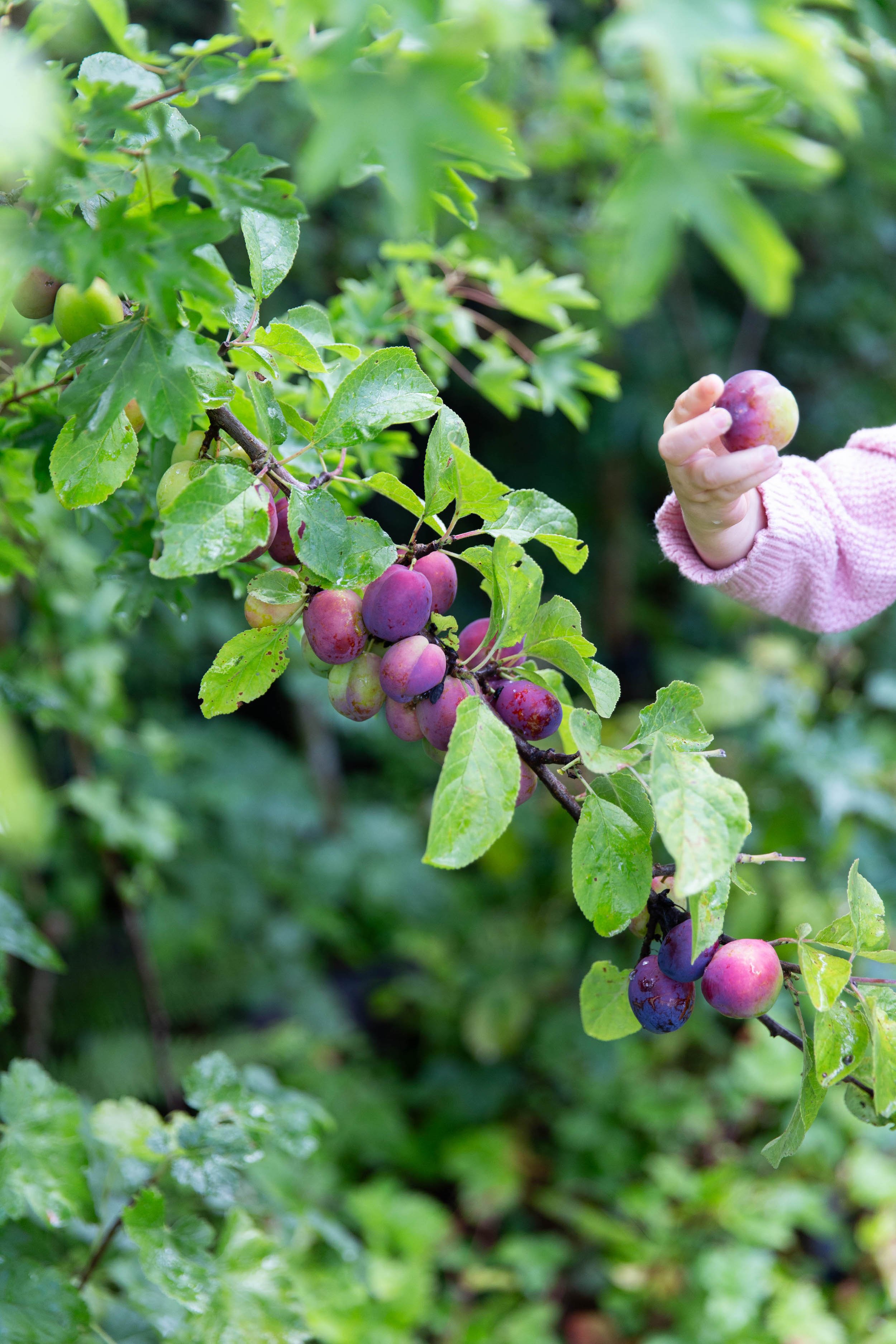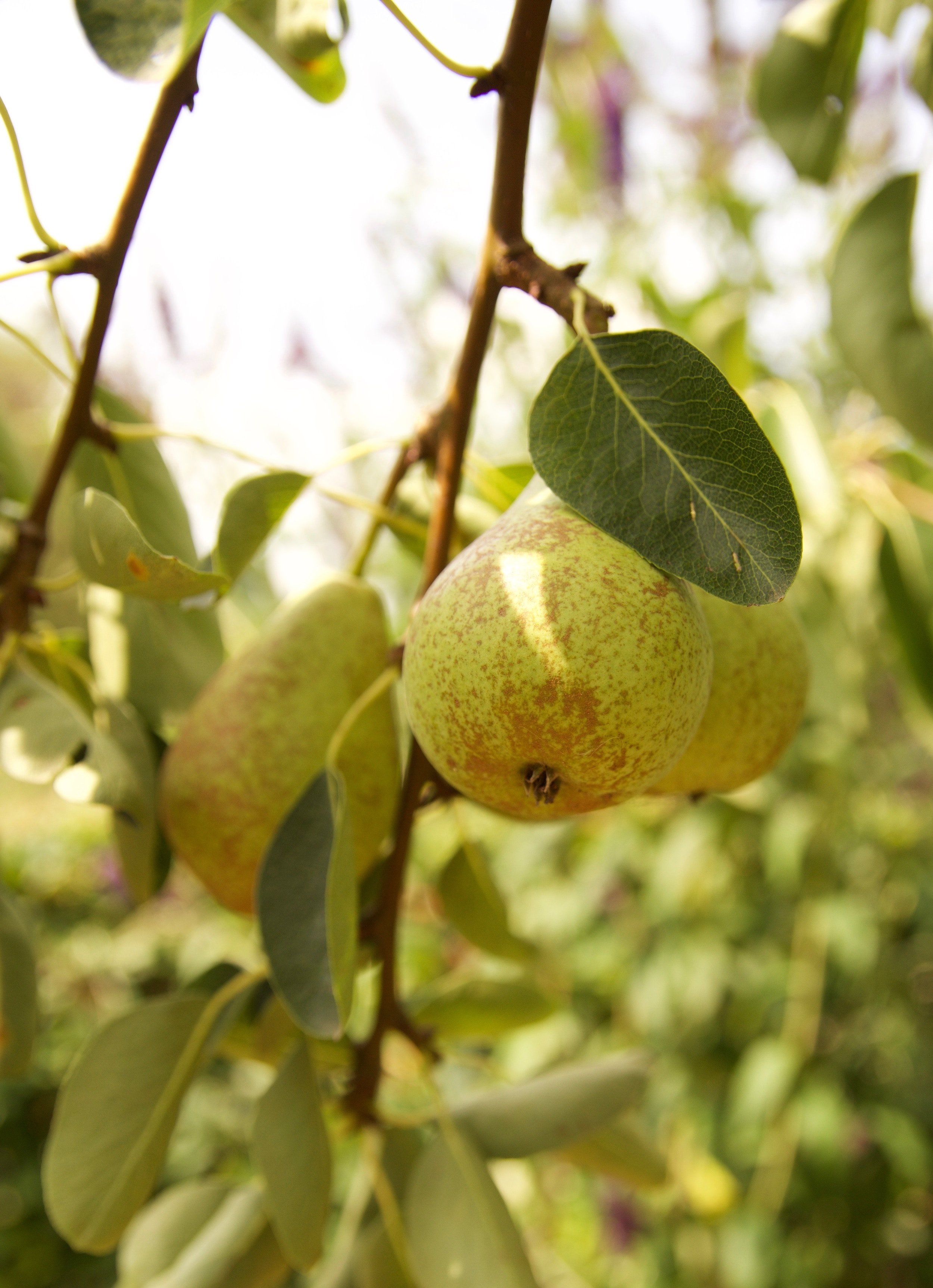How to choose the right rootstock
Most fruit trees are grown on what is known as a “rootstock” – the base of an entirely different tree, with the fruit tree grafted on top. But what exactly is a rootstock, how does this work and how do you know which one to choose?
What is a rootstock?
Rootstocks can sound intimidatingly confusing at first, and are definitely one of the more complicated sides of horticulture, especially for new gardeners… A rootstock is literally the roots and the base of the trunk of a tree, which can be used to grow an entirely different tree on top. (A friend of ours loves to call them “Frankentrees” as they are trees that are literally made by sticking two different trees together…)
Most fruit trees are grown for the quality of the fruit (a delicious crispy green apple, for example, or a ripe, juicy, purple plum.) But the most delicious fruit doesn’t necessarily come with the healthiest or best tree. So to create an overall tree that is healthy, grows well, and isn’t too big for its allotted space, the fruit trees can be grown on the roots of different tree underneath.
For this to happen, the top of the tree (the branches and fruit producing part) are grafted onto the bottom of a tree (the rootstock) when both are quite young. They are cut at an appropriate place, taped together, and the tree will eventually heal itself, grow together and then grow as one tree.
This will all be done by the plant nursery or grower, so when the tree is ready to buy, it will already be growing well on the rootstock.
Choosing the right rootstock
If you’re looking to add a fruit tree to your garden, there is often an overwhelming choice of varieties available. And then adding in a choice of different rootstocks too can feel overwhelming!
However, rootstocks are usually chosen based on their size, and there tend to be a few that are commonly used for each type of fruit tree.
So, for example, if you were planting an apple tree, you could choose a rootstock appropriate for the ultimate size you’d like the tree to grow: an M27 would be perfect for a very small garden, whereas an MM111 would suit as full-sized tree in an orchard.
Rootstocks tend to have names that are derived from letters and numbers, and can be hard to remember, but most plant nursery websites will outline the characteristics of the rootstock along with the tree itself. (There are a few names that are easier to remember, such as Pixy, the dwarf rootstock often used for plums and damsons…)
See our section on rootstock choices below for a full list.
Caring for grafted trees
You care for trees that are grafted on rootstocks just as you would any normal tree, however, there is one extra thing to look out for.
As the base of the tree is different to the top part, in some cases, the trunk can start to grow new branches from below the grafted tree. These will show the characteristics of the base of the tree, rather than the chosen tree on top. For example, a cherry tree with pink flowers may grow branches lower down with white blossom. (You might have seen this in a park before, when a tree has half and half flowers in different colours…)
If you do see any branches emerging from below the grafting line (in other words, growing from the rootstock and not the tree on top) it’s important to prune them out. if they’re left, over time they can become more vigorous and take over the rest of the tree.
Rootstock choices
Here’s an overview of the most commonly available rootstocks for each type of tree. The ultimate heights shown are the size of the tree once it is fully grown – this can take anything from around 5-10 years. The size of the tree when first bought will be considerably smaller…
apple
By far the largest selection of different rootstocks are available for apples.
M27
Very dwarfing. The ultimate height of the tree will be around 1.5-1.8m.
Good for small gardens, containers, or trained as stepovers (very small fruit trees grown along wires, relatively close to the ground…)
M9
Dwarfing. Ultimate height 2-2.5m.
Good for small gardens, or trained as cordons.
M26
Semi dwarfing. Ultimate height 2.5-3m.
Good for cordons, espaliers and containers
MM106
Semi-dwarfing. Ultimate height 3-4m.
Good for most forms and most gardens
MM111
Vigorous. Ultimate height 4.5m.
Good for anywhere a full tree is needed, including orchards
M25
Very vigorous. Ultimate height 4.5m+.
Good for orchards, generally too large for most gardens, unless there is poor soil (which will naturally restrict growth)
cherry
Gisella 5
Dwarfing. Ultimate height 2.5-3m
Good for fans and trained trees
Colt
Semi-vigorous. Ultimate height 3-4m.
Good for standard trees.
pear
Quince C
Semi dwarfing. Ultimate height 2-5.3m
Quince A
Also semi-dwarfing, but slightly larger, with an ultimate height of 3m
plum
VVA-1
Dwarfing. Ultimate height 2.5m
Pixy
Semi-dwarfing. Ultimate height 3.5m
St Julien A
Semi dwarfing. Ultimate height 3.5-4m
Brompton
Vigorous. Ultimate height 9-12m





